Discover the Women of the Hall
These are the Inductees of the National Women’s Hall of Fame. Select any of the women to discover their stories and learn how they have influenced other women and this country.
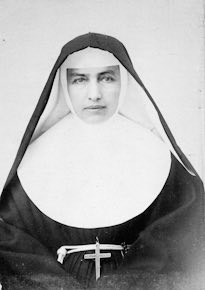
Mother Marianne Cope
As a Sister of the Third Order of St. Francis, Mother Marianne Cope worked for several years in Syracuse, New York, helping to found St. Joseph’s Hospital. In 1883, she went to Kalaupapa, Hawaii where she spent thirty years ministering to those with leprosy. While in Hawaii, she worked hand in hand with Father Damien during the last part of his life.
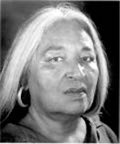
Patricia A. Locke
Locke worked for decades to preserve American Indian languages and became a pioneer in an effort to grant the tribes greater authority in the education of their children. Locke was a 1991 MacArthur Fellow for her work to save dying tribal languages. In 1993, she became the first Native American woman elected to the national governing body of the Baha’i faith.
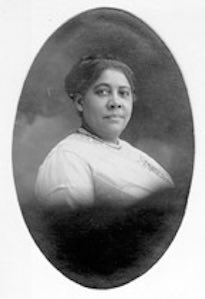
Mary Burnett Talbert
Civil Rights activist and suffragist, Talbert was the first African-American high school principal in the state of Arkansas. Moving to Buffalo in 1891, she went on to lecture internationally on race relations and women’s rights. In 1905, she helped found and organize the Niagara Movement, a forerunner of the NAACP.
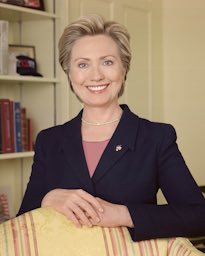
Hillary Rodham Clinton
Hillary Rodham Clinton is the first First Lady ever to be elected to the United States Senate. She is the first woman Senator from New York. Her efforts on behalf of women’s, family and children’s issues began during her earliest employment as an attorney and remain steadfast today. Senator Clinton is the first New York State Senator to serve on the Senate Armed Services Committee.
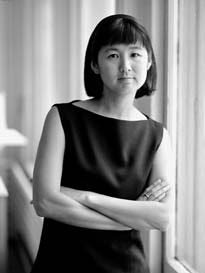
Maya Y. Lin
Lin, an architectural designer who gained fame at the age of 21 as creator of the Vietnam Veteran’s Memorial, is a Chinese-American who draws on a variety of culturally diverse sources for her inspiration. Some of her well-known works include the Civil Rights Memorial at the Southern Poverty Law Center in Montgomery, AL and The Wave Field at the University of Michigan.
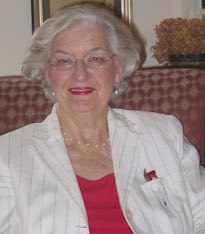
Betty Bumpers
Former first lady of Arkansas, Betty Bumpers dedicated herself to world peace and health initiatives for children across the United States. As First Lady of Arkansas, Mrs. Bumpers spearheaded an immunization program in her state that became a national model. She also co-founded Every Child by Two with Rosalynn Carter, a national immunization program. Mrs. Bumpers was active in the global campaign to eradicate polio.

Mother Marianne Cope
As a Sister of the Third Order of St. Francis, Mother Marianne Cope worked for several years in Syracuse, New York, helping to found St. Joseph’s Hospital. In 1883, she went to Kalaupapa, Hawaii where she spent thirty years ministering to those with leprosy. While in Hawaii, she worked hand in hand with Father Damien during the last part of his life.

Patricia A. Locke
Locke worked for decades to preserve American Indian languages and became a pioneer in an effort to grant the tribes greater authority in the education of their children. Locke was a 1991 MacArthur Fellow for her work to save dying tribal languages. In 1993, she became the first Native American woman elected to the national governing body of the Baha’i faith.

Mary Burnett Talbert
Civil Rights activist and suffragist, Talbert was the first African-American high school principal in the state of Arkansas. Moving to Buffalo in 1891, she went on to lecture internationally on race relations and women’s rights. In 1905, she helped found and organize the Niagara Movement, a forerunner of the NAACP.

Hillary Rodham Clinton
Hillary Rodham Clinton is the first First Lady ever to be elected to the United States Senate. She is the first woman Senator from New York. Her efforts on behalf of women’s, family and children’s issues began during her earliest employment as an attorney and remain steadfast today. Senator Clinton is the first New York State Senator to serve on the Senate Armed Services Committee.

Maya Y. Lin
Lin, an architectural designer who gained fame at the age of 21 as creator of the Vietnam Veteran’s Memorial, is a Chinese-American who draws on a variety of culturally diverse sources for her inspiration. Some of her well-known works include the Civil Rights Memorial at the Southern Poverty Law Center in Montgomery, AL and The Wave Field at the University of Michigan.

Betty Bumpers
Former first lady of Arkansas, Betty Bumpers dedicated herself to world peace and health initiatives for children across the United States. As First Lady of Arkansas, Mrs. Bumpers spearheaded an immunization program in her state that became a national model. She also co-founded Every Child by Two with Rosalynn Carter, a national immunization program. Mrs. Bumpers was active in the global campaign to eradicate polio.
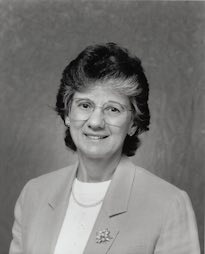
Rita Rossi Colwell
Dr. Rita R. Colwell became the first woman and first biologist to head the National Science Foundation in 1998, spearheading the agency’s emphases in K-12 science and mathematics education, graduate science and engineering education/training and the increased participation of women and minorities in science and engineering.
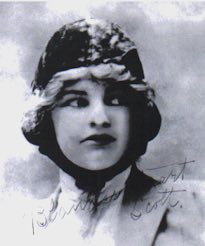
Blanche Stuart Scott
Born in Rochester, New York, Scott was a pioneering aviatrix, becoming the first American woman to take a solo hop into the air, although her flight is not regarded as official. In 1910, she became one of the first woman to drive an automobile coast to coast in her car – the ‚”Lady Overland”. Scott was also the first and only woman to take flying lessons from Glenn Curtiss, later flying with the Curtiss Exhibition Team and earning the nickname ‚”Tomboy of the Air”.

Florence Ellinwood Allen
Judge Florence Ellinwood Allen was a legal pioneer, breaking barriers for women in law. Her numerous accomplishments include becoming the first American woman to hold the office of Assistant County Prosecutor, first woman judge of the highest court of a state by election (Ohio), and first female judge of a United States Circuit Court of Appeals by presidential appointment.
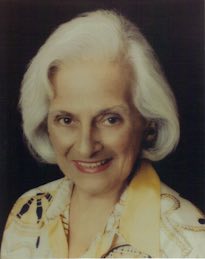
Mildred Robbins Leet
As Co-founder and Chairman of the Trickle Up Program, Inc., philanthropist Mildred Leet assisted people worldwide in rising out of poverty. Trickle Up provides seed capital to impoverished individuals, allowing them the opportunity to work their way to self-sufficiency. Leet also helped found United Cerebral Palsy and was a co-founder and Vice President of the U.S. Committee for the United Nations Development Fund for Women (UNIFEM).
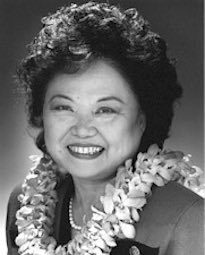
Patsy Takemoto Mink
As the first Asian-American Congresswoman in the history of the United States, attorney Patsy Takemoto Mink opened doors for women and minorities. Her persistence in securing the passage of Title IX in 1972 assured equal treatment for women in athletics in American educational institutions.
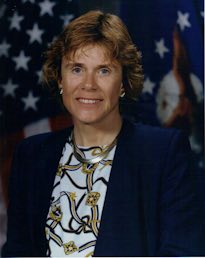
Sheila E. Widnall
Appointed Secretary of the Air Force in 1993 by President Clinton, Widnall became the first woman to hold the position. A world-renowned scientist, she holds three patents in airflow technology. As a current member of MIT faculty, she is internationally known for her work in fluid dynamics, specifically in the areas of aircraft turbulence and the spiraling air flows called vortices created by helicopters.

Rita Rossi Colwell
Dr. Rita R. Colwell became the first woman and first biologist to head the National Science Foundation in 1998, spearheading the agency’s emphases in K-12 science and mathematics education, graduate science and engineering education/training and the increased participation of women and minorities in science and engineering.

Blanche Stuart Scott
Born in Rochester, New York, Scott was a pioneering aviatrix, becoming the first American woman to take a solo hop into the air, although her flight is not regarded as official. In 1910, she became one of the first woman to drive an automobile coast to coast in her car – the ‚”Lady Overland”. Scott was also the first and only woman to take flying lessons from Glenn Curtiss, later flying with the Curtiss Exhibition Team and earning the nickname ‚”Tomboy of the Air”.

Florence Ellinwood Allen
Judge Florence Ellinwood Allen was a legal pioneer, breaking barriers for women in law. Her numerous accomplishments include becoming the first American woman to hold the office of Assistant County Prosecutor, first woman judge of the highest court of a state by election (Ohio), and first female judge of a United States Circuit Court of Appeals by presidential appointment.

Mildred Robbins Leet
As Co-founder and Chairman of the Trickle Up Program, Inc., philanthropist Mildred Leet assisted people worldwide in rising out of poverty. Trickle Up provides seed capital to impoverished individuals, allowing them the opportunity to work their way to self-sufficiency. Leet also helped found United Cerebral Palsy and was a co-founder and Vice President of the U.S. Committee for the United Nations Development Fund for Women (UNIFEM).

Patsy Takemoto Mink
As the first Asian-American Congresswoman in the history of the United States, attorney Patsy Takemoto Mink opened doors for women and minorities. Her persistence in securing the passage of Title IX in 1972 assured equal treatment for women in athletics in American educational institutions.

Sheila E. Widnall
Appointed Secretary of the Air Force in 1993 by President Clinton, Widnall became the first woman to hold the position. A world-renowned scientist, she holds three patents in airflow technology. As a current member of MIT faculty, she is internationally known for her work in fluid dynamics, specifically in the areas of aircraft turbulence and the spiraling air flows called vortices created by helicopters.
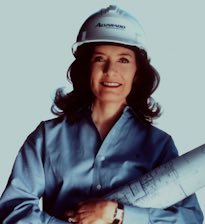
Linda G. Alvarado
Hispanic-American businesswoman who started her own construction firm in 1976 and has broken many barriers in a historically male-dominated world. As co-owner of The Colorado Rockies baseball team, Alvarado is also the first Hispanic-American, male or female, to own a major league baseball franchise.
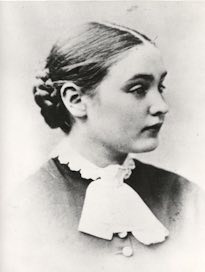
Anne Sullivan
Best known as the woman who taught Helen Keller to read, write and minimally speak, Anne Sullivan lost her own sight to trachoma at an early age. She went on to graduate from Perkins School for the Blind in Boston and eventually receive medical treatment that restored her sight. Both Sullivan and Keller became role models for thousands of physically challenged people around the world.
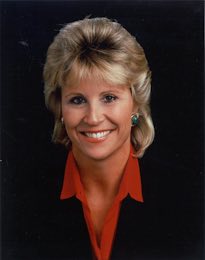
Donna de Varona
In 1960, at the age of 13, de Varona became the youngest member of a U.S. Olympic swim team. Just four years later, she won gold medals in the 400 IM and 400 Freestyle Relay at the Tokyo Olympics. She went on to set 18 world records in her career, and was the first President of the Women’s Sports Foundation.
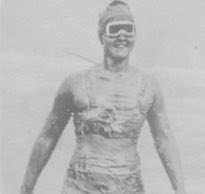
Gertrude "Trudy" Ederle
In 1926, Ederle became the first woman to swim the English Channel, setting a new time record that would stand for the next 35 years. Ederle’s accomplishment was a milestone as it expanded opportunity for other women in athletics.
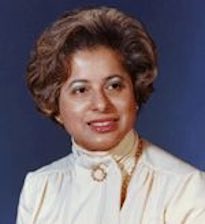
Patricia Roberts Harris
In 1965, President Lyndon B. Johnson appointed Harris ambassador to Luxembourg, making her the first African-American women to hold the position of ambassador. She then served as the first African-American woman to head a law school, when she was appointed dean of Howard University School of Law in 1969. In 1977, President Jimmy Carter chose Harris to be Secretary of Housing and Urban Development and eventually Secretary of Health, Education and Welfare, thus making her the first African-American woman to be appointed a Cabinet Secretary.
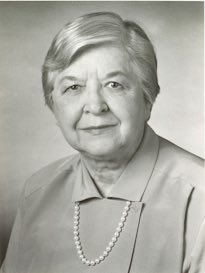
Stephanie L. Kwolek
Interested in science and medicine from a young age, Kwolek graduated from Carnegie Institute of Technology and then took a job at DuPont Chemicals to save for graduate studies. However, her love of working with polymers kept her at DuPont, where she discovered the fiber that led to the development of Kevlar, a bulletproof material five times stronger than steel. Kwolek is the recipient or co-recipient of 17 U.S. patents.

Linda G. Alvarado
Hispanic-American businesswoman who started her own construction firm in 1976 and has broken many barriers in a historically male-dominated world. As co-owner of The Colorado Rockies baseball team, Alvarado is also the first Hispanic-American, male or female, to own a major league baseball franchise.

Anne Sullivan
Best known as the woman who taught Helen Keller to read, write and minimally speak, Anne Sullivan lost her own sight to trachoma at an early age. She went on to graduate from Perkins School for the Blind in Boston and eventually receive medical treatment that restored her sight. Both Sullivan and Keller became role models for thousands of physically challenged people around the world.

Donna de Varona
In 1960, at the age of 13, de Varona became the youngest member of a U.S. Olympic swim team. Just four years later, she won gold medals in the 400 IM and 400 Freestyle Relay at the Tokyo Olympics. She went on to set 18 world records in her career, and was the first President of the Women’s Sports Foundation.

Gertrude "Trudy" Ederle
In 1926, Ederle became the first woman to swim the English Channel, setting a new time record that would stand for the next 35 years. Ederle’s accomplishment was a milestone as it expanded opportunity for other women in athletics.

Patricia Roberts Harris
In 1965, President Lyndon B. Johnson appointed Harris ambassador to Luxembourg, making her the first African-American women to hold the position of ambassador. She then served as the first African-American woman to head a law school, when she was appointed dean of Howard University School of Law in 1969. In 1977, President Jimmy Carter chose Harris to be Secretary of Housing and Urban Development and eventually Secretary of Health, Education and Welfare, thus making her the first African-American woman to be appointed a Cabinet Secretary.

Stephanie L. Kwolek
Interested in science and medicine from a young age, Kwolek graduated from Carnegie Institute of Technology and then took a job at DuPont Chemicals to save for graduate studies. However, her love of working with polymers kept her at DuPont, where she discovered the fiber that led to the development of Kevlar, a bulletproof material five times stronger than steel. Kwolek is the recipient or co-recipient of 17 U.S. patents.
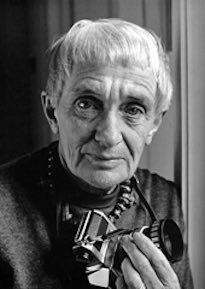
Dorothea Lange
Lange was a pioneer in documentary photography, remembered for her wide-ranging photographs of Americans during the depression and the Japanese-American internment during World War II, and for her later work in Asia. She put a human face on political issues of the day, such as poverty and social injustice. Lange was the first woman awarded a Guggenheim Fellowship in photography in 1940.
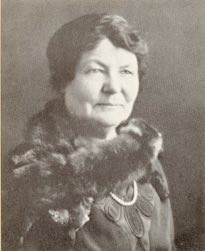
Martha Matilda Harper
After 25 years of low-wage service, Martha Matilda Harper started a beauty products system called the Harper Method, eventually realizing over 500 franchises world-wide in the 1920s. Harper is credited with creating the modern retail franchising method. She was also known as a social justice advocate ahead of her time, offering evening hours for working women, profit-sharing and personal time off. She refused to use permanents or hair dyes in her salons because of the associated chemicals.
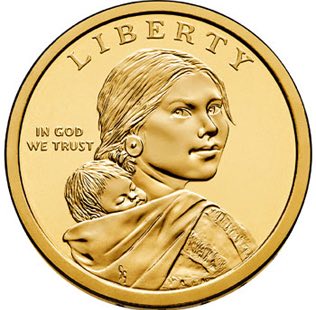
Sacagawea / Sacajawea / Sakakawea
A Shoshone woman who served as a guide to Lewis and Clark during their exploration of the American West, Sacagawea was an instrumental part in the success of this legendary Expedition.
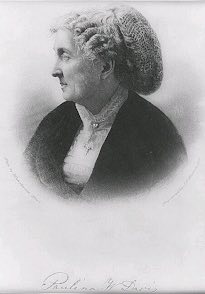
Paulina Kellogg Wright Davis
Born and raised in western New York, Davis headed the committee that organized the first National Women’s Rights Convention in Worcester, MA in 1850. She helped found the New England Women’s Suffrage Association and established Una, one of the first women’s rights newspapers.
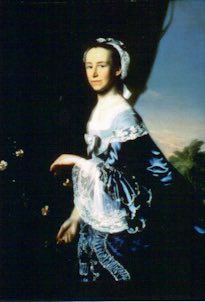
Mercy Otis Warren
Poet, dramatist, satirist and historian Mercy Otis Warren was widely known for using her pen to share her strong political views. She advocated for national independence and opposition to royal tyranny through works such as The Adulateur and The Group.
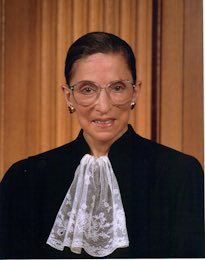
Ruth Bader Ginsburg
Supreme Court Justice Ruth Bader Ginsburg has spent her career working to eliminate gender-based stereotyping and discrimination. Justice Ginsburg is the second woman appointed to the United States Supreme Court in its 212 year history.

Dorothea Lange
Lange was a pioneer in documentary photography, remembered for her wide-ranging photographs of Americans during the depression and the Japanese-American internment during World War II, and for her later work in Asia. She put a human face on political issues of the day, such as poverty and social injustice. Lange was the first woman awarded a Guggenheim Fellowship in photography in 1940.

Martha Matilda Harper
After 25 years of low-wage service, Martha Matilda Harper started a beauty products system called the Harper Method, eventually realizing over 500 franchises world-wide in the 1920s. Harper is credited with creating the modern retail franchising method. She was also known as a social justice advocate ahead of her time, offering evening hours for working women, profit-sharing and personal time off. She refused to use permanents or hair dyes in her salons because of the associated chemicals.

Sacagawea / Sacajawea / Sakakawea
A Shoshone woman who served as a guide to Lewis and Clark during their exploration of the American West, Sacagawea was an instrumental part in the success of this legendary Expedition.

Paulina Kellogg Wright Davis
Born and raised in western New York, Davis headed the committee that organized the first National Women’s Rights Convention in Worcester, MA in 1850. She helped found the New England Women’s Suffrage Association and established Una, one of the first women’s rights newspapers.

Mercy Otis Warren
Poet, dramatist, satirist and historian Mercy Otis Warren was widely known for using her pen to share her strong political views. She advocated for national independence and opposition to royal tyranny through works such as The Adulateur and The Group.

Ruth Bader Ginsburg
Supreme Court Justice Ruth Bader Ginsburg has spent her career working to eliminate gender-based stereotyping and discrimination. Justice Ginsburg is the second woman appointed to the United States Supreme Court in its 212 year history.
